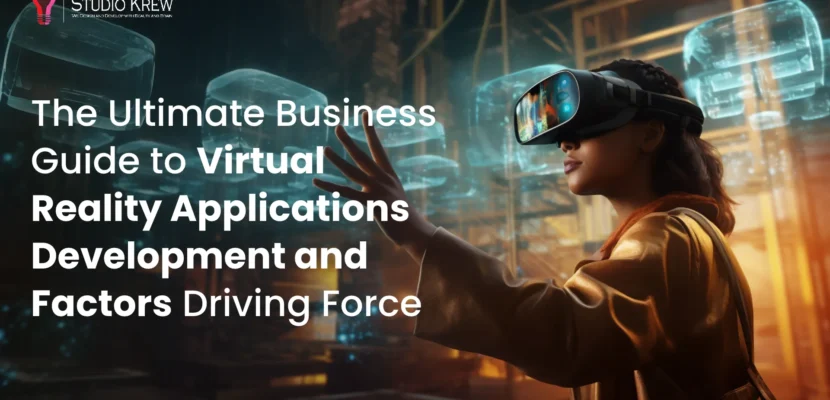In today’s fast-paced digital landscape, Virtual Reality (VR) has emerged as a game-changing technology that can revolutionize industries, redefine customer experiences, and drive business growth. As businesses worldwide seek to harness VR’s potential through VR App Development Services, understanding its applications, development process, and critical driving forces is essential for staying ahead of the curve. VR’s ability to create immersive and interactive experiences can significantly enhance customer engagement and satisfaction, making it a valuable tool for businesses in various sectors.
Organizations are leveraging virtual reality technology to conduct a myriad of activities, from virtual simulation & training, engineering and maintenance, marketing, designing, prototyping, and assistance to events with their workers, employees, customers, and other audiences. The Leading AR VR Applications Development Companies in the market are focused on providing advanced hardware and content to not just enhance, but transform customer experiences. The market is propelled by the growing demand for the gaming and entertainment industry, rising medical and healthcare training applications, which allow surgeons to practice complex procedures, and technological innovations in virtual reality.
According to Fortune Business Insights, the global virtual reality market was valued at $25.11 billion in 2023. It is projected to grow from $32.64 billion in 2024 to a staggering $244.84 billion by 2032, exhibiting a Compound Annual Growth Rate (CAGR) of 28.6% during the forecast period from 2024 to 2032. These numbers underscore the potential of Virtual Reality (VR) to revolutionize businesses, particularly in the context of ever-changing work environments. As a result, VR technology could play a significant role in shaping the future of various industries, making it a market that demands attention and understanding.
*Virtual Reality [VR] Market Size, Growth, Share | Report – www.fortunebusinessinsights.com/industry-reports/virtual-reality-market-101378
Virtual Reality Market Overview
Virtual reality (VR) has emerged as a disruptive force across various industries, with significant potential realized, particularly in healthcare applications. Leveraging VR technology, healthcare sectors are experiencing a notable transformation in surgeries, patient care, and medical training. The simulated environments created by VR enhance surgical procedures and provide invaluable training opportunities for medical professionals, facilitated by VR App Development Services explicitly tailored for healthcare.
One prominent advancement in healthcare VR is the introduction of assisted robotic systems that aid surgeons during procedures. For example, the collaboration between VirtaMed and Memic Innovative Surgery resulted in the launch of the Memics Hominis surgical virtual reality system facilitated by a VR app development company specializing in healthcare solutions. The system is aimed at enhancing surgeons’ preparation and skills acquisition.
Beyond healthcare, the VR market has witnessed consistent growth driven by several key trends. Increased end-user adoption, facilitated by the easier Development of VR technology and advancements in hardware, has expanded the market landscape. Moreover, the proliferation of VR-tailored services by VR App Development Companies and its integration into various enterprise applications further fuel market growth.
As we look into the future, we will see several emerging trends that will significantly impact the VR market. These include the Development of highly realistic VR experiences, innovative applications in education, incorporation of artificial intelligence (AI) into VR systems, an increase in socially accessible VR platforms, and the widespread use of VR across various business sectors. While these trends offer exciting opportunities, they also pose challenges such as the need for robust data security measures and the potential for overreliance on virtual interactions, which may impact real-world social interactions. These trends are supported by Virtual Reality game app development services catering to different industries’ specific needs.
In addition to healthcare, VR finds applications across multiple industries, including gaming, entertainment, education, aerospace, and defence. The versatility of VR technology, combined with its immersive and interactive nature, makes it a compelling tool for enhancing learning experiences, product design, remote collaboration, and virtual tourism, driving demand for specialized VR Game Development Companies and VR App Development Services.
As the demand for interactive and immersive experiences continues to grow, fueled by technological advancements and decreasing costs of VR devices, the virtual reality market is poised for sustained expansion across various sectors. VR App Development Companies, with their expertise in creating innovative and user-friendly VR applications, are playing a crucial role in shaping the future of VR applications. Their contributions are instrumental in making VR more accessible and beneficial for businesses and consumers alike.
Also Read: Factors Influencing Mobile Game Development Cost Estimations. Read Now!
Factors Driving Force in the VR App Development Market:
Rising demand in the gaming and entertainment industry
There is a rise in the demand for virtual reality in the gaming and entertainment industry as it provides a highly immersive and interactive experience beyond traditional platforms. It allows players to be fully immersed in a virtual world, where they can physically move, interact with objects, and engage with virtual characters, which enhances the gaming experience. Virtual reality allows users to explore virtual worlds, attend virtual events, and have interactive and personalized entertainment encounters in the entertainment sector. Moreover, it provides:
- Virtual theme park attractions.
- Immersive storytelling.
- Virtual reality-based movies and concerts offer individuals unique and interactive entertainment experiences.
- Virtual Fitness Platforms
- Virtual Multi-Gaming platforms
If you are looking for Entertainment Games Development Services and Entertainment Application Development Services, you may connect with our business experts at StudioKrew.
Increasing applications in medical and healthcare
There is a rise in the adoption of virtual reality in the healthcare industry for various purposes. It improves surgeons’ skills, precision techniques, and patient safety. It is widely used in surgical simulations, allowing surgeons to practice complex procedures in a realistic, risk-free environment. Virtual reality is also utilized for pain management, Post Trauma Recovery, and Therapeutic purposes as immersive experiences distract patients from pain or discomfort during medical procedures and reduce tutilizedfor sedation or medication. Moreover, it is used in mental health treatment programs to provide exposure therapy for phobias, anxiety disorders, and post-traumatic stress disorder (PTSD).
Technological innovations in virtual reality
The introduction of virtual reality hardware and software is significantly improving the immersive experience for users. High-resolution displays, faster processors, and advanced graphics capabilities provide more realistic and visually appealing virtual environments. In addition, the Development of standalone virtual reality headsets, which do not require a separate computer or console, offer enhanced convenience and are more accessible to users. Besides this, the integration of other technologies with virtual reality, such as haptic feedback devices and motion tracking systems, to enhance the level of immersion and interactivity is positively influencing the market. Haptic feedback devices provide tactile sensations that allow users to feel and touch virtual objects, enhancing the realism of the virtual environment. Motion tracking systems accurately capture users’ movements and enable natural and intuitive interactions within the virtual environment, further enhancing the immersive experience.
Integration with Other Technologies:
One of the most compelling aspects of VR is its seamless integration with other cutting-edge technologies, amplifying its potential to create truly transformative experiences. By harnessing the power of artificial intelligence (AI), VR applications can dynamically adapt and respond to user behaviour, creating personalized and adaptive experiences that feel truly immersive and lifelike. Furthermore, the integration of blockchain technology enables secure transactions and verifiable ownership of virtual assets, paving the way for new monetization models and decentralized virtual economies. Additionally, the Internet of Things (IoT) ecosystem converges with VR to create interconnected and interactive environments where physical and virtual worlds intertwine, opening up limitless possibilities for innovation and exploration.
Industry Adoption:
Across a myriad of industries, from retail and real estate to healthcare and automotive, VR is being embraced as a game-changing technology with the potential to revolutionize business operations and customer experiences. In the retail sector, virtual shopping experiences are blurring the lines between online and offline retail, enabling consumers to browse and purchase products in immersive virtual storefronts from the comfort of their homes. Similarly, in real estate, VR empowers prospective buyers to explore properties through virtual tours, saving time and resources while providing a more immersive and realistic representation of properties. In healthcare, VR is used for everything from pain management and rehabilitation to surgical training and patient education, offering new avenues for improving outcomes and enhancing patient care.
Understanding Virtual Reality Applications Development
Virtual Reality application development refers to creating immersive digital experiences using VR technology. It involves designing and building virtual environments that users can interact with using specialized hardware such as VR headsets and controllers. These applications span various industries, including gaming, education, healthcare, and enterprise, offering unique and engaging experiences. VR application development requires programming, design, and user experience expertise, from crafting lifelike virtual worlds to integrating interactive elements and functionalities. Join us as we unravel the intricacies of VR Game & App development and explore its transformative potential in reshaping business and technology landscapes in 2024 and beyond.
Virtual Reality (VR) Segment Insight
In understanding the dynamic landscape of the global virtual reality market, it’s crucial to delve into its various segments, each offering unique opportunities and driving forces.
1. Segmentation by Device Type:
1.1 Head-Mounted Display (HMD): The Pinnacle of Immersive Experiences
Head-mounted displays (HMDs) emerge as the dominant market segment, captivating users with unparalleled immersive experiences. HMDs, worn on the head, envelop users in virtual reality environments through built-in displays, lenses, and sensors tracking head movements. IMARC’s report underscores the exponential growth of HMD adoption, fueled by its ability to provide the visual and auditory stimuli essential for immersion.
Key Drivers:
- Immersive Experience: HMDs deliver a sensory-rich experience, transporting users into virtual worlds with lifelike realism.
- Stereoscopic 3D Effect: The demand for HMDs is increasing due to their ability to create a stereoscopic 3D effect, which enhances customer engagement and satisfaction.
- Rising Adoption: Increasingly, industries harness HMDs for applications ranging from gaming and entertainment to training and simulation, driving market expansion.
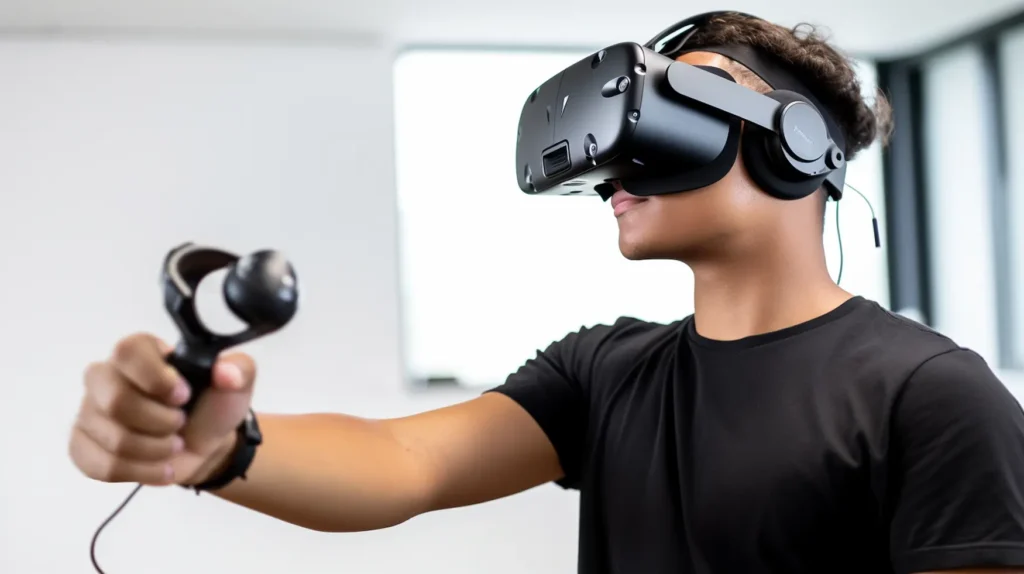
1.2 Gesture-Tracking Device: Redefining Interaction Paradigms
Gesture-tracking devices signify a transformative shift in how users interact with virtual environments. These devices enable intuitive, gesture-based interactions, empowering users to manipulate virtual objects with natural hand movements. While currently a smaller segment than HMDs, gesture-tracking devices exhibit promising growth prospects, especially in applications requiring precise, hands-free interaction.
Key Attributes:
- Intuitive Interaction: Gesture-tracking devices offer intuitive interaction, eliminating the need for complex controllers and enhancing user immersion.
- Hands-Free Operation: These devices enable hands-free operation, catering to applications such as healthcare, where hygiene and ease of use are paramount.
- Potential for Expansion: As gesture-tracking technology advances and becomes more accessible, its adoption is anticipated to increase across diverse sectors, driving market growth.
1.3 Projectors and Display Wall: Creating Shared Immersive Spaces
Projectors and display walls redefine shared immersive experiences, enabling multiple users to engage with virtual content simultaneously. These large-scale display solutions cater to applications such as immersive gaming arenas, collaborative design environments, and interactive retail spaces. While currently a niche segment, projectors and display walls hold significant potential for expansion, particularly in sectors prioritizing collaborative interaction and engagement.
Distinctive Features:
- Shared Immersive Experiences: Projectors and display walls facilitate shared immersive experiences, fostering collaboration and social interaction.
- Versatile Applications: From entertainment venues to corporate boardrooms, these solutions cater to various applications, driving industry demand.
- Innovation Opportunities: Ongoing advancements in display technology and content creation tools present opportunities for innovation and market growth within this segment.
2. Segmentation by Technology:
2.1 Semi and Fully Immersive: Pioneering Immersive Experiences
Semi and fully immersive technologies emerge as the predominant market segment, commanding the lion’s share of market dominance. IMARC’s report highlights the robust growth of these immersive technologies, driven by their ability to transport users into captivating digital environments.
Semi-Immersive:
Semi-immersive experiences offer users a partial immersion into digital realms, typically through computer screens or projection systems. Users interact with virtual content using input devices like controllers or keyboards, facilitating engagement while retaining awareness of the physical environment. This technology finds applications in training simulations, educational environments, and virtual conferencing, where partial immersion balances engagement and real-world interaction.
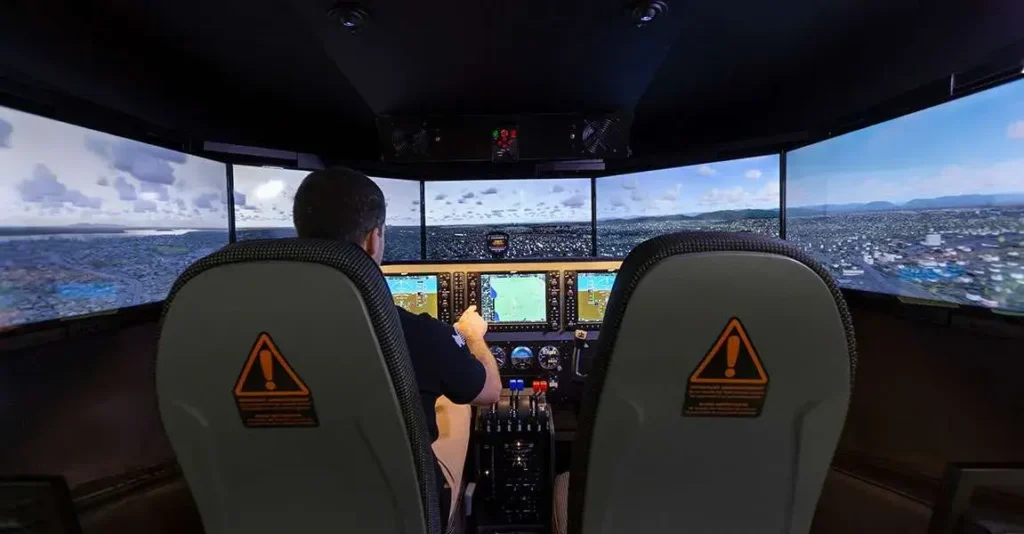
Fully Immersive:
Fully immersive experiences redefine the boundaries of reality, offering users a seamless transition into virtual worlds through head-mounted displays (HMDs). These HMDs provide users with a wide field of view, high-resolution visuals, and stereoscopic 3D effects, enveloping them in a sensory-rich environment. Spatial audio systems further enhance immersion by delivering sound from different directions, heightening the sense of presence and realism. Fully immersive technology finds widespread adoption in gaming, entertainment, architectural visualization, and simulation training, where complete immersion enhances user engagement and interaction.

Key Attributes:
- Engagement: Semi and fully-immersive technologies captivate users with immersive experiences, fostering deeper engagement and emotional connection.
- Interactivity: Users interact with virtual environments intuitively, leveraging input devices and spatial tracking technologies to manipulate digital content.
- Application Diversity: From training simulations to entertainment venues, these technologies cater to a diverse range of applications, driving market expansion and innovation.
2.2 Non-Immersive: Bridging the Gap Between Physical and Digital Realms
While overshadowed by their immersive counterparts, non-immersive technologies play a vital role in bridging the gap between physical and digital realms. These technologies offer users a window into virtual environments without fully immersing them, facilitating engagement while maintaining awareness of the physical surroundings.

Key Features:
- Visualization Tools: Non-immersive technologies encompass visualization tools such as desktop displays, tablets, and smartphones, providing users with access to virtual content without the need for specialized hardware.
- Collaborative Environments: Non-immersive technologies facilitate collaborative interactions, enabling multiple users to engage with virtual content simultaneously and share experiences in real time.
- Accessibility: Non-immersive solutions are often more accessible and cost-effective than fully immersive alternatives, making them ideal for applications requiring widespread adoption and scalability.
3. Segmentation by Component:
3.1 Hardware: Enabling Immersive Experiences
Hardware serves as the backbone of the VR ecosystem, facilitating immersive and interactive experiences for users. This segment encompasses various physical devices and equipment essential for creating and accessing virtual environments, including:
Key Components:
- Head-Mounted Displays (HMDs): HMDs are primary interfaces that immerse users in virtual worlds. They feature built-in displays, lenses, and sensors to track head movements.
- Input Devices: These devices enable users to interact with virtual content, facilitating intuitive navigation and manipulation of digital objects.
- Audio Systems: Spatial audio systems enhance immersion by delivering sound from different directions, heightening the sense of presence and realism.
- Tracking Systems: Tracking systems monitor users’ movements and gestures, translating real-world actions into virtual interactions.
Key Attributes:
- Immersive Experience: Hardware components provide users with sensory-rich environments that blur the boundaries between reality and virtuality, fostering more profound engagement.
- Interactivity: Input devices and tracking systems empower users to interact intuitively with virtual environments, enhancing the overall user experience.
- Technological Advancements: Ongoing innovations in hardware technology continually push the boundaries of VR capabilities, driving market growth and evolution.
3.2 Software: Empowering Immersive Experiences
Software solutions play a pivotal role in shaping immersive VR experiences and driving innovation within the Industry. This segment encompasses a wide range of software tools, applications, and platforms designed to create, develop, and deploy VR content, including:
Key Components:
- Content Creation Tools: These tools enable developers and creators to design, develop, and optimize immersive VR experiences, ranging from 3D modelling software to game engines and simulation tools.
- VR Applications: VR applications span various industries and use cases, including gaming, entertainment, education, healthcare, and enterprise, leveraging software technology to deliver compelling user experiences.
- Development Platforms: Development platforms provide developers with the tools, frameworks, and resources needed to build and deploy VR applications across different platforms and devices, streamlining the development process.
Key Attributes:
- Creativity and Innovation: Software solutions empower developers and creators to unleash their creativity and innovate within the VR space, driving market growth and evolution.
- Versatility and Adaptability: Software solutions offer versatility and adaptability, catering to diverse use cases and industries within the VR ecosystem.
- Accessibility and Scalability: Development platforms and content creation tools democratize access to VR technology, making it more accessible to developers and businesses of all sizes.
3.3 Content: Driving Engagement and Immersion
Content is the heart and soul of immersive VR experiences, captivating users and transporting them into compelling digital worlds. This segment encompasses various forms of content, including:
Key Elements:
- Immersive Narratives: Compelling storylines, characters, and environments transport users into captivating digital realms, fostering engagement and emotional connection.
- Interactive Experiences: Interactivity empowers users to engage meaningfully with virtual environments and characters, driving deeper engagement and exploration.
- Educational and Training Content: VR content extends beyond entertainment, offering academic and training experiences that empower users to learn, explore, and master new skills in immersive virtual environments.
Key Attributes:
- Engagement and Retention: Compelling content captivates users and keeps them returning for more, driving engagement, retention, and loyalty within the VR ecosystem.
- Education and Empowerment: Educational and training content empowers users to learn, explore, and master new skills in immersive virtual environments, fostering personal and professional growth.
- Diversity and Inclusivity: VR content reflects the diversity and inclusivity of the natural world, offering users a wide range of experiences and perspectives to explore and engage with.
4. Segmentation by Application
Exploring the diverse applications of virtual reality (VR) technology unveils many opportunities across various sectors. Understanding the segmentation by application provides invaluable insights into how businesses leverage VR to enhance operations, engage customers, and drive innovation. Let’s delve into the critical application segments driving the VR market 2024.
4.1 Commercial: Revolutionizing Business Operations
The commercial sector commands the largest market share within the VR landscape, encompassing various business applications across industries. VR technology is reshaping how businesses operate and engage with customers, from training and simulation to architecture, real estate, e-commerce, marketing, advertising, and conference meetings.
Key Applications:
- Training and Stimulation: VR facilitates immersive training programs that allow employees to practice real-life scenarios in a safe and controlled environment, enhancing learning outcomes and reducing training costs.
- Architecture and Real Estate: VR enables architects and real estate professionals to showcase designs and properties in immersive virtual environments, providing clients with a realistic preview and enhancing decision-making processes.
- E-commerce: VR enhances the online shopping experience by enabling virtual product demonstrations and interactive shopping environments, increasing customer engagement and conversion rates.
- Marketing and Advertising: VR campaigns captivate audiences with immersive storytelling experiences, fostering deeper brand engagement and driving brand awareness.
- Conference Meetings: VR technology facilitates virtual meetings and conferences, enabling remote collaboration and communication in immersive virtual environments.
Key Benefits:
- Customer Engagement: VR enhances customer engagement by providing immersive and interactive experiences that capture attention and drive brand loyalty.
- Training Efficiency: VR-based training programs improve efficiency and effectiveness by enabling hands-on learning experiences in virtual environments.
- Cost Savings: VR reduces travel, training, and physical infrastructure costs by providing virtual alternatives that deliver comparable outcomes at a fraction of the expense.
4.2 Consumer: Transforming Entertainment and Gaming
The consumer segment of the VR market encompasses entertainment and gaming applications, revolutionizing how individuals consume media and interact with digital content. VR technology immerses users in captivating virtual worlds, offering unparalleled gaming experiences, immersive storytelling, and interactive entertainment.
Key Applications:
- Gaming: VR gaming experiences transport players into immersive virtual environments, providing unparalleled levels of immersion and interactivity.
- Entertainment: VR enables immersive storytelling experiences, interactive narratives, and virtual experiences across various forms of media, including film, music, and art.
Key Benefits:
- Immersive Experiences: VR technology provides immersive experiences that blur the lines between reality and virtuality, enhancing entertainment and gaming experiences.
- Interactivity: VR enables interactive storytelling and gaming experiences, empowering users to engage meaningfully with virtual environments and characters.
4.3 Enterprise Training and Simulation: Enhancing Learning and Development
The enterprise training and simulation segment leverages VR technology to provide immersive learning experiences and practical training simulations across industries. From corporate training programs to industrial simulations, VR enhances learning outcomes and enables employees to practice real-world scenarios in a safe and controlled environment.
Key Applications:
- Corporate Training: VR-based training programs enhance employee learning and Development by providing immersive and interactive learning experiences across various domains, including sales, customer service, and leadership development.
- Industrial Simulations: VR facilitates realistic simulations of industrial processes, equipment operation, and safety procedures, enabling employees to practice skills and procedures in a virtual environment.
Key Benefits:
- Realistic Scenarios: VR simulations replicate real-world scenarios with high fidelity, providing employees with realistic learning experiences that prepare them for on-the-job challenges.
- Safe Environment: VR enables employees to practice skills and procedures in a safe and controlled environment, reducing the risk of accidents and injuries associated with traditional training methods.
4.4 Healthcare: Revolutionizing Patient Care and Training
The healthcare segment harnesses VR technology to enhance patient care, medical training, and therapeutic interventions. VR enables healthcare professionals to simulate medical procedures, visualize complex anatomical structures, and deliver immersive therapeutic experiences to patients.
Key Applications:
- Medical Training: VR-based medical training programs provide healthcare professionals with realistic simulations of medical procedures, enabling hands-on learning experiences in a virtual environment
- Patient Care: VR facilitates immersive therapeutic experiences, including pain management, rehabilitation, and mental health interventions, improving treatment outcomes and patient satisfaction.
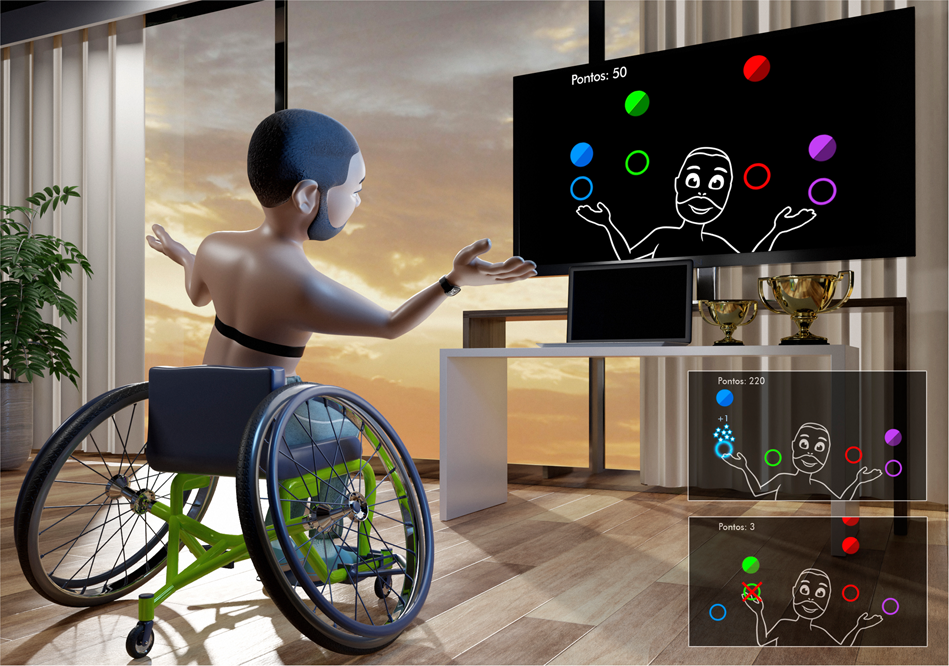
Key Benefits:
- Hands-On Learning: VR simulations enable healthcare professionals to practice medical procedures and surgical techniques virtually, enhancing learning outcomes and skill proficiency.
- Patient Engagement: VR therapy and rehabilitation programs engage patients in immersive experiences that alleviate pain, reduce anxiety, and enhance treatment compliance.
Also Read: The Comprehensive Guide to Healthcare Application Development Read Now!
4.5 Others: Exploring Emerging Applications
The “others” category encompasses various emerging applications and use cases for VR technology. From education and travel to architecture, automotive, and beyond, VR continues to find innovative applications across diverse industries and sectors.
Key Applications:
- Education: VR enhances educational experiences by providing immersive learning environments and interactive simulations across various subjects and disciplines.
- Travel and Tourism: VR enables virtual tours, destination previews, and immersive travel experiences, allowing users to explore destinations and attractions from the comfort of their homes.
- Architecture and Design: VR facilitates architectural visualization, prototyping, and virtual walkthroughs, enabling architects and designers to showcase projects and concepts in immersive virtual environments.
- Automotive: VR enhances automotive design, engineering, and marketing processes by providing virtual prototyping, virtual showrooms, and interactive product demonstrations.
Key Benefits:
- Immersive Exploration: VR technology enables users to explore and interact with virtual environments, products, and experiences in previously impossible ways.
- Creative Expression: VR empowers creators and innovators to experiment with new forms of storytelling, design, and expression, pushing the boundaries of creativity and innovation.
5 Segmentation based on Industry
Exploring the segmentation of the virtual reality (VR) market by Industry unveils many applications and opportunities across diverse sectors. Each Industry uniquely harnesses VR technology to enhance operations, engage customers, and drive innovation. Let’s delve into how VR is reshaping various industries in 2024.

1. Gaming: Pioneering Immersive Experiences
The gaming industry stands at the forefront of VR adoption, leveraging immersive technology to redefine interactive entertainment. VR gaming transports players into captivating virtual worlds, offering heightened realism, interactivity, and immersion. From action-packed adventures to immersive simulations, VR gaming delivers unparalleled experiences that captivate players and push the boundaries of traditional gaming.
Key Applications:
- Immersive Environments: VR creates lifelike virtual environments that immerse players in dynamic and engaging worlds.
- Interactive Gameplay: Players interact meaningfully with virtual environments and characters, enhancing engagement and immersion.
- Innovative Experiences: VR gaming pioneers new gameplay mechanics and storytelling techniques, offering unique and compelling experiences for players.
2. Entertainment: Redefining Content Consumption
The entertainment industry embraces VR technology to revolutionize content consumption across various mediums. From immersive films and virtual concerts to interactive experiences and storytelling, VR entertainment offers audiences a new way to engage with content. VR enables creators to push the boundaries of traditional media and deliver captivating experiences that blur the lines between reality and virtuality.
Key Applications:
- Immersive Films: VR enables filmmakers to create cinematic experiences that transport viewers into the heart of the action.
- Virtual Concerts: VR concerts allow audiences to experience live performances from anywhere, offering a sense of presence and connection.
- Interactive Storytelling: VR storytelling empowers creators to craft interactive narratives that engage and captivate audiences in unprecedented ways.
3. Retail: Enhancing the Shopping Experience
The retail Industry leverages VR technology to transform the shopping experience and drive customer engagement. VR enables retailers to create immersive virtual stores, showcase products in interactive environments, and offer virtual try-on experiences. By blending the physical and digital realms, VR retail enhances customer satisfaction, increases sales, and fosters brand loyalty.
Key Applications:
- Virtual Stores: VR creates virtual storefronts where customers can browse and purchase products in immersive environments.
- Product Visualization: VR allows customers to visualize products in 3D, explore features, and customize options before purchasing.
- Virtual Try-On: VR enables virtual try-on experiences for clothing, accessories, and cosmetics, allowing customers to see how products look and fit in real-time.
4. Automotive: Revolutionizing Design and Marketing
The automotive Industry harnesses VR technology to revolutionize design, marketing, and customer engagement. VR enables automakers to visualize vehicle designs in 3D, create virtual showrooms, and offer immersive test drive experiences. By leveraging VR, automotive companies enhance design collaboration, streamline marketing efforts, and provide customers with immersive brand experiences.
Key Applications:
- Design Visualization: VR enables automotive designers to visualize vehicle designs in 3D, iterate on concepts, and evaluate features before production.
- Virtual Showrooms: VR creates virtual showrooms where customers can explore vehicles, customize options, and experience features in immersive environments.
- Immersive Test Drives: VR test drive experiences allow customers to experience vehicles in simulated environments, providing a realistic preview of performance and features.
5. Healthcare: Improving Patient Care and Training
The healthcare industry utilizes VR technology to improve patient care, medical training, and therapeutic interventions. VR enables healthcare professionals to simulate medical procedures, visualise anatomical structures, and deliver immersive therapeutic experiences to patients. By leveraging VR, healthcare organizations enhance treatment outcomes, patient experience, and patient recovery.
Key Applications:
- Medical Training: VR-based medical training programs provide healthcare professionals with realistic simulations of medical procedures, enabling hands-on learning experiences in a virtual environment.
- Patient Care: VR facilitates immersive therapeutic experiences, including pain management, rehabilitation, and mental health interventions, improving treatment outcomes and patient satisfaction.
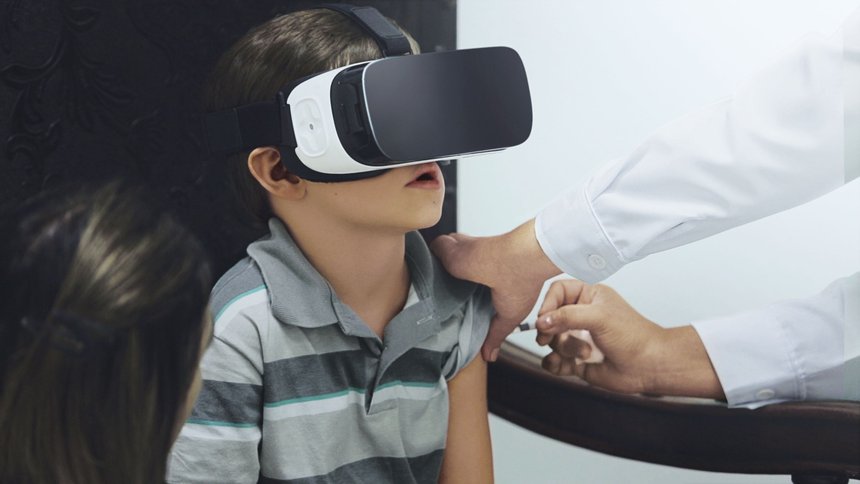
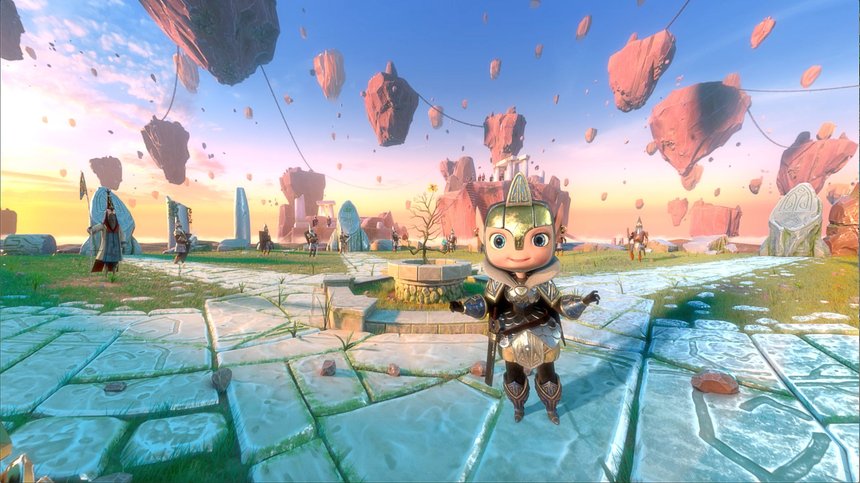
Credit: Hermes Pardini Vaccine Center
6. Education: Transforming Learning Experiences
The education industry embraces VR technology to transform learning experiences and engage students in immersive environments. VR enables educators to create virtual classrooms, conduct interactive lessons, and provide hands-on learning experiences across various subjects and disciplines. By leveraging VR, educational institutions enhance student engagement, retention, and learning outcomes.
Key Applications:
- Virtual Classrooms: VR creates virtual classrooms where students can participate in interactive lessons and collaborative activities in immersive environments.
- Hands-On Learning: VR enables students to explore complex concepts and interact with virtual objects in simulated environments, facilitating experiential learning and skill development.
- Field Trips: VR field trips allow students to explore historical sites, natural wonders, and cultural landmarks worldwide, providing immersive learning experiences that complement traditional education.
7. Aerospace and Defence: Advancing Training and Simulation
The aerospace and defence industry leverages VR technology to advance training, simulation, and operational readiness. VR enables aerospace engineers and defence personnel to visualize complex systems, conduct simulations, and train for mission-critical scenarios in virtual environments. Aerospace and defence organizations improve safety, efficiency, and mission success by integrating VR into training programs.

Key Applications:
- Training Simulations: VR training simulations enable aerospace engineers and defence personnel organizations to practice complex procedures and scenarios in realistic virtual environments.
- Operational Readiness: VR facilitates mission planning, tactical simulations, and scenario-based training exercises, enhancing operational readiness and preparedness.
8. Manufacturing: Optimizing Production and Design
The manufacturing industry utilizes VR technology to optimize production processes, streamline design workflows, and improve operational efficiency. VR enables manufacturers to visualize factory layouts, conduct virtual prototyping, and train employees in simulated environments. By integrating VR into manufacturing workflows, companies reduce costs, minimize errors, and enhance productivity.
Key Applications:
- Factory Visualization: VR enables manufacturers to visualize factory layouts, identify inefficiencies, and optimize production processes for improved efficiency and productivity.
- Virtual Prototyping: VR facilitates virtual prototyping of products and production systems, allowing manufacturers to iterate on designs, evaluate performance, and identify potential issues before production.
Why is Virtual Reality App Development Becoming Essential for Business?
Virtual Reality App Development, a technology with immense potential, is poised to transform businesses across various industries. It offers transformative solutions that can streamline processes, enhance productivity, and drive growth, painting a promising future for businesses.
VR technology is not just a buzzword, but a practical tool that can revolutionize businesses. It enables the creation of immersive digital experiences that engage customers, streamline operations, and foster innovation. By leveraging VR, companies can overcome geographical limitations, facilitate remote collaboration, and deliver unparalleled user experiences. Let’s explore how VR App Development services can bring tangible benefits to modern businesses:
Improved Customer Service:
Virtual Reality (VR) technology is not just a novelty, but a game-changer in customer service. It allows businesses to create immersive experiences that engage and delight customers. By leveraging VR, companies can transport customers to virtual showrooms or demonstrations, enhancing customer engagement and satisfaction. This ultimately drives brand loyalty and repeat business. Additionally, VR-powered customer support systems offer personalized assistance, leading to more efficient problem resolution and higher customer satisfaction.
Automation of Induction and Training:
VR training simulations have emerged as a powerful tool for automating business induction and training processes. These simulations provide employees with hands-on learning experiences in a virtual environment, allowing them to practice skills and procedures in a safe and controlled setting. By replacing traditional training methods with VR simulations, businesses can significantly reduce the time and cost associated with employee training while ensuring that employees are better prepared to perform their job responsibilities. Furthermore, VR simulations for high-risk scenarios, such as emergency response or hazardous environments, enable employees to gain valuable experience without putting themselves or others in danger.
Increase Operational Efficiency:
VR technology offers numerous opportunities for businesses to increase operational efficiency by streamlining workflows and processes. Virtual simulations of tasks and operations allow businesses to optimize resource allocation, reduce waste, and identify opportunities for improvement. For example, VR-powered maintenance and troubleshooting tools enable technicians to diagnose and resolve issues remotely, minimizing downtime and maximizing productivity. Additionally, VR-powered data visualization tools provide real-time insights into operations, allowing businesses to make informed decisions and proactively address potential challenges. By embracing VR technology, companies can optimize operations, reduce costs, and gain a competitive edge in their respective industries. The potential return on investment (ROI) of VR app development can be significant, with many businesses reporting cost savings and increased productivity within the first year of implementation.
Easier Collaboration:
Virtual Reality (VR) creates personalized virtual meetings that enable teams to collaborate effectively regardless of their physical location. These immersive environments foster communication, creativity, and teamwork, allowing team members to brainstorm ideas, review designs, and make decisions together in real time. By eliminating the barriers imposed by distance and time zones, VR enables businesses to bring together diverse teams and expertise, resulting in more innovative solutions and better outcomes. Additionally, VR-powered remote training and workshops allow businesses to provide employees with professional development opportunities regardless of location, fostering a culture of continuous learning and growth within the organization.
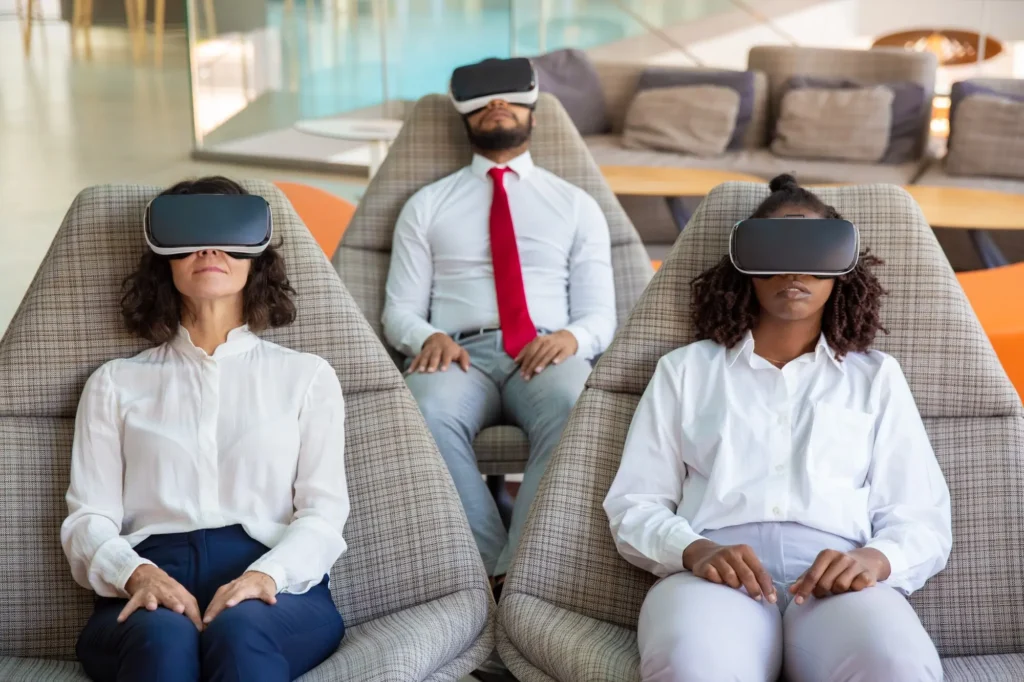
Decrease Incident Cost:
VR training simulations play a critical role in reducing incident costs by preparing employees for real-world scenarios in a safe and organized virtual environment. These simulations allow employees to practice emergency procedures and response protocols, ensuring that they are better equipped to handle unexpected situations when they arise. By simulating high-risk scenarios, such as fires, accidents, or security breaches, businesses can identify potential risks and develop preventive measures to mitigate their impact. Furthermore, post-incident analysis using VR simulations enables businesses to identify root causes and implement corrective actions to prevent similar incidents from occurring in the future, ultimately reducing incident costs and enhancing workplace safety.
Build Strong Marketing Campaigns:
Virtual Reality (VR) experiences have the power to captivate audiences and create memorable marketing campaigns that drive brand awareness and engagement. By leveraging VR technology, businesses can create immersive experiences that allow customers to experience products or services in a virtual environment. For example, virtual tours or demonstrations enable customers to explore properties, venues, or products from the comfort of their own homes, leading to higher levels of engagement and interest. Additionally, VR-powered storytelling enables businesses to convey their brand message compellingly and interactively, fostering emotional connections and brand loyalty among customers.
Streamlined Product Design and Prototyping:
VR technology revolutionizes product design and prototyping by enabling designers and engineers to visualize and iterate on designs in a virtual environment. These virtual prototypes allow businesses to test and refine product concepts before investing in physical prototypes, reducing time-to-market and development costs. Additionally, VR simulations facilitate collaborative design reviews and feedback sessions, enabling cross-functional teams to communicate and iterate on designs effectively. By embracing VR technology, businesses can streamline the product design and development process, resulting in higher-quality products and improved customer satisfaction.
Enhanced Data Visualization and Analytics:
Virtual Reality (VR) offers robust data visualization tools that enable businesses to explore complex data sets in three-dimensional space. These immersive visualizations provide new insights and perspectives that traditional charts or graphs cannot convey, allowing businesses to make more informed decisions and identify trends or patterns that may not be apparent otherwise. Additionally, interactive VR dashboards provide real-time access to key performance indicators (KPIs) and metrics, empowering users to monitor performance and track progress towards goals. By leveraging VR technology for data visualization and analytics, businesses can gain a competitive edge and drive innovation in their respective industries.
Real Estate and Architecture Visualization:
VR technology transforms the way real estate properties and architectural designs are showcased and experienced. Virtual property tours enable potential buyers to explore properties in a realistic and immersive virtual environment, providing a more engaging and interactive experience than traditional photographs or videos. Additionally, architectural visualization using VR allows architects and designers to present designs compellingly and interactively, enabling clients to visualize spaces and provide feedback in real-time. By embracing VR technology for real estate and architecture visualization, businesses can enhance the buying experience for customers and streamline the design process for architects and designers. If you’re considering VR app development for your business, now is the time to take action and start reaping the benefits of this transformative technology.
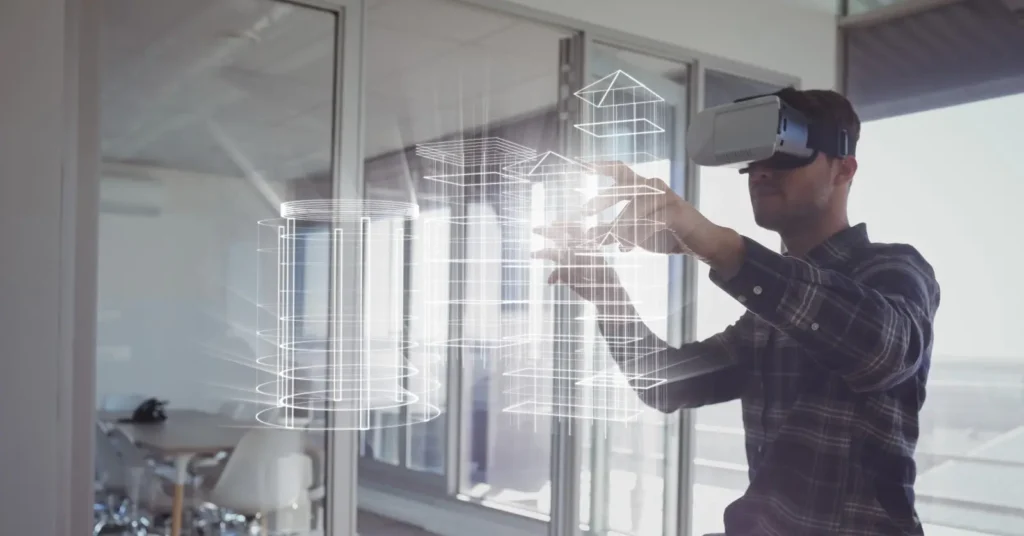
Challenges and Considerations in VR Application Development
In the fast-paced realm of Virtual Reality (VR) application development, businesses face many challenges and considerations that profoundly impact the success and efficacy of their VR initiatives. Let’s delve deeper into these challenges and considerations to gain a comprehensive understanding:
1. Hardware Limitations:
While VR hardware continues to evolve rapidly, developers encounter challenges associated with hardware requirements and compatibility issues across different VR platforms. One of the primary challenges lies in optimizing VR applications to deliver consistent performance across a wide range of hardware configurations, from high-end VR headsets to mobile VR devices. Developers must contend with varying processing power, display resolutions, and tracking capabilities, necessitating meticulous optimization and testing to ensure a seamless user experience across all platforms. Moreover, the fragmented nature of the VR hardware market presents additional hurdles, as developers must navigate compatibility issues and platform-specific SDKs to deliver cross-platform VR experiences.
2. User Experience (UX) Design:
In VR application development, user experience (UX) design takes on heightened importance due to the immersive nature of the medium. Designing intuitive and user-friendly VR interfaces is essential to enhance immersion and engagement while minimizing user discomfort or disorientation. However, balancing usability and immersion presents a unique challenge in VR UX design. Developers must consider factors such as spatial interactions, locomotion mechanics, and feedback mechanisms to create intuitive and immersive interfaces. Additionally, VR design requires a paradigm shift from traditional 2D interfaces, necessitating innovative navigation, interaction, and information display approaches.
3. Content Creation:
Compelling content is the lifeblood of successful VR applications, yet content creation poses significant challenges regarding quality, interactivity, and scalability. Creating immersive environments, lifelike characters, and interactive experiences that resonate with users requires specialized skills and tools. From 3D modelling and animation to audio design and storytelling, content creation for VR demands a multidisciplinary approach and a keen understanding of the unique affordances and constraints of the medium. Moreover, optimizing content for performance and scalability without sacrificing visual fidelity is a constant challenge as developers strive to deliver immersive experiences running smoothly on various hardware configurations.
4. Cost Implications:
VR application development entails various cost considerations that businesses must carefully evaluate to ensure a return on investment. The upfront costs of VR development can be substantial, encompassing expenses such as hardware procurement, software licenses, and development resources. High-quality VR hardware and software are essential to deliver immersive experiences, but they come with a price tag that may be prohibitive for some businesses. Additionally, ongoing maintenance and updates are necessary to keep VR applications up-to-date with evolving hardware platforms and software ecosystems, adding to the long-term cost of ownership. Moreover, the fragmented nature of the VR market can lead to additional expenses associated with platform-specific development and optimization.
5. Performance Optimization:
Achieving optimal performance is crucial in VR application development to ensure smooth and responsive user experiences. Developers must carefully optimize graphics rendering, audio processing, and input handling to maintain consistent frame rates and minimize latency. Balancing visual fidelity with performance is a constant challenge, particularly on lower-end hardware devices where resource constraints may limit the complexity of scenes and interactions.
6. Motion Sickness and Comfort:
Motion sickness and discomfort are common challenges in VR experiences, especially during activities involving rapid movement or changes in perspective. Developers must employ comfort modes, motion smoothing, and locomotion design principles to mitigate these issues and enhance user comfort. Additionally, conducting thorough user testing and gathering feedback is essential to identify and address potential sources of discomfort in VR applications.
7. Accessibility and Inclusivity:
Ensuring accessibility and inclusivity is paramount in VR application development to accommodate users with diverse needs and abilities. Developers must consider visual impairments, mobility limitations, and cognitive disabilities when designing VR experiences. Providing customizable settings, alternative input methods, and clear instructions can help make VR applications more accessible and enjoyable for all users.
8. Data Privacy and Security:
Data privacy and security are critical considerations in VR application development, especially in applications that collect and store user data. Developers must adhere to strict privacy regulations and implement robust security measures to protect sensitive information from unauthorized access or exploitation. Additionally, transparent privacy policies and user consent mechanisms are essential to build trust and confidence among VR application users.
9. Content Curation and Moderation:
Content curation and moderation are essential to managing user-generated content in VR applications, particularly in social or multiplayer environments. Developers must implement robust content moderation systems to detect and filter inappropriate or offensive content, safeguarding the user experience and maintaining a positive community environment. Additionally, providing tools for users to report inappropriate content and enforcing community guidelines can help foster a safe and welcoming VR environment.
10. Long-term Support and Maintenance:
Ensuring long-term support and maintenance is crucial in VR application development to address evolving hardware and software platforms, fix bugs, and introduce new features. Developers must establish a roadmap for ongoing support and maintenance, including regular updates, bug fixes, and compatibility enhancements. Additionally, providing responsive customer support and engaging with the VR community can help foster a loyal user base and drive continued success for VR applications.
Strategies for Successful VR Application Development
Achieving success in Virtual Reality (VR) application development requires a strategic approach encompassing market research, collaboration, agile methodologies, and data-driven optimization. Let’s explore these strategies in detail to understand how businesses can maximize the impact of their VR initiatives:
1. Thorough Market Research:
Conducting comprehensive market research is a foundational step in successful VR application develmaximizeBusinesses must gain insights into their target audience, industry-specific use cases, and emerging trends in the VR landscape. By understanding their target users’ needs, preferences, and pain points, businesses can tailor their VR applications to deliver value and address real-world challenges effectively. Additionally, market research helps companies identify opportunities for innovation and differentiation, enabling them to carve out a competitive advantage in the crowded VR market.
2. Collaboration with Experienced VR Developers and Designers:
Collaborating with experienced VR developers and designers is essential for bringing innovative ideas to life and delivering high-quality VR experiences. Partnering with professionals with expertise in VR technology, user experience design, and content creation can streamline the development process and ensure that VR applications meet the highest quality and performance standards. By leveraging a skilled team’s collective knowledge and experience, businesses can mitigate risks, overcome technical challenges, and achieve their vision for immersive VR experiences.
3. Implementation of Agile Development Methodologies:
Implementing agile development methodologies is critical for success in VR application development, allowing businesses to iterate and improve their applications based on user feedback and evolving requirements. Agile methodologies, such as Scrum or Kanban, enable teams to break down complex projects into manageable tasks, prioritize features based on user value, and deliver incremental updates quickly and efficiently. By embracing agility, businesses can adapt to changing market dynamics, respond to user needs promptly, and maintain a competitive edge in the fast-paced world of VR technology.
4. Leveraging Analytics and User Data:
Leveraging analytics and user data is essential for optimizing VR experiences and driving engagement. By collecting and analyzing data on user behaviour, interactions, and preferences, businesses can gain valuable insights into how users engage with their VR applications. This data-driven approach enables businesses to identify areas for improvement, refine user interfaces, and enhance overall user satisfaction. Additionally, analytics can inform strategic decision-making, such as feature prioritization, content updates, and marketing campaigns, helping businesses maximize the impact of their VR initiatives and achieve their business objectives.
5. User-Centric Design Approach:
Adopting a user-centric design approach is crucial for creating VR applications that meet users’ needs and expectations. By prioritizing user feedback and usability testing throughout the development process, businesses can ensure that their VR applications are intuitive, engaging, and accessible to many users. User-centric design involves:
- Empathizing with users.
- Understanding their goals and challenges.
- Incorporating their feedback to improve the VR experience iteratively.
Additionally, conducting user research, prototyping interfaces, and usability testing can help businesses validate design decisions and identify opportunities for enhancement, ultimately leading to more successful VR applications.
How Can StudioKrew Help you with Virtual Reality App Development Services?
As a top Virtual Reality Application Development Company, StudioKrew – the AR VR Game App Development company with a base in the USA, UK, UAE, and headquarters in India, is committed to empowering businesses to harness the power of VR and stay ahead of the competition. Here’s how our VR application development services can benefit your business:
1. Expertise in VR Technology:
With years of experience as a VR App Development company, StudioKrew boasts a team of seasoned professionals with deep expertise in VR technology, tools, and techniques. Whether you’re looking to create immersive VR experiences for training, marketing, simulation, or entertainment purposes, our talented developers and designers have the skills and knowledge to bring your vision to life.
2. Tailored Solutions for Your Business Needs:
At StudioKrew, we understand that every business is unique, with its goals, challenges, and requirements. We take a customized approach to VR application development, working closely with our clients to understand their specific needs and objectives. Whether you’re a small startup or a large enterprise, we tailor our solutions to align with your business goals and deliver tangible results.
3. Innovative and Engaging VR Experiences:
As a leading VR Game Development Company in India and the USA, StudioKrew specializes in creating immersive and engaging VR experiences that captivate audiences and leave a lasting impression. Whether interactive simulations, virtual tours, or immersive storytelling, we leverage cutting-edge technologies and design principles to deliver experiences that resonate with users.
4. End-to-End Development Services:
StudioKrew is a professional development company that specializes in Virtual Reality (VR) application development services. We handle everything from the initial concept to the final deployment to ensure a smooth and seamless development process. We also offer custom backend services, web and mobile application development, game development services, and REVIT Plugin Automation. Our team covers every aspect of the development lifecycle, including ideation, design, development, testing, and deployment. You can trust us to handle your VR project from start to finish with professionalism and expertise.
5. Consultation and Support:
In addition to our development services, StudioKrew provides expert consultation and support to guide you through every stage of your VR journey. Whether you’re exploring the possibilities of VR technology for the first time or seeking to optimize an existing VR application, our team is here to offer strategic insights, practical advice, and technical expertise. We pride ourselves on being responsive, collaborative, and committed to helping our clients achieve their business objectives through VR.
Ready to harness the power of Virtual Reality for your business? Contact StudioKrew today to learn more about our VR application development services and how we can help you unlock new opportunities in 2024 and beyond. Whether you’re looking to create immersive training simulations, engaging marketing experiences, or innovative product demonstrations, our team is here to turn your vision into reality. Don’t miss out on the transformative potential of VR technology, and take advantage of VR in your organization with the Top VR App Development Company StudioKrew.
